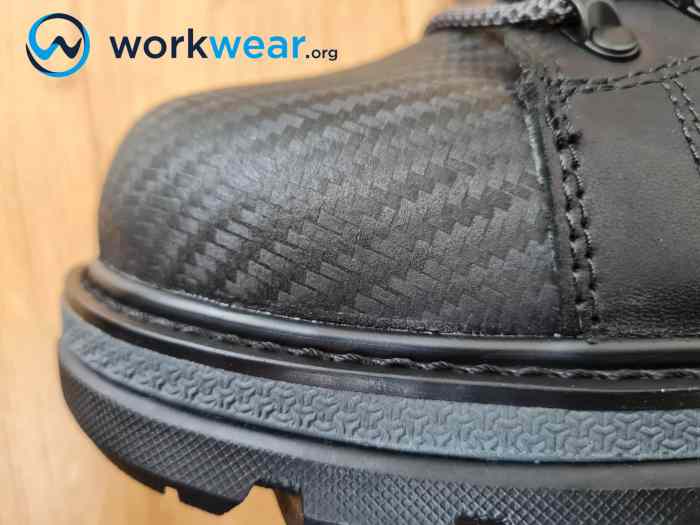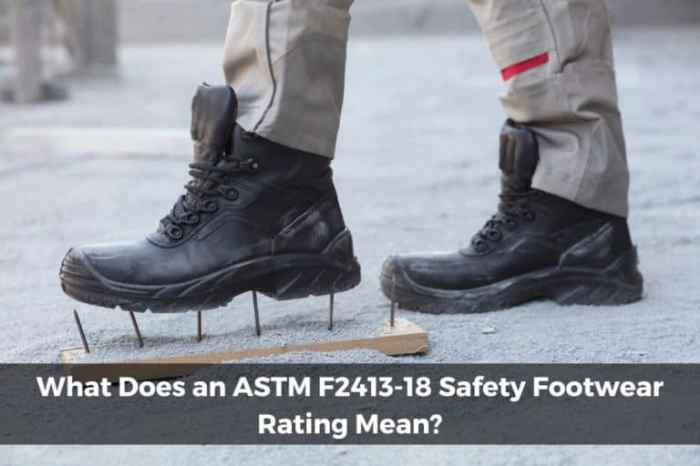New ASTM standards for footwear specify that it should meet specific requirements to ensure durability, comfort, and safety. These standards provide a comprehensive framework for manufacturers to follow, ensuring that footwear meets the highest quality standards.
The standards cover a wide range of aspects, including performance requirements, material specifications, design considerations, labeling and certification, and impact on the footwear industry. By adhering to these standards, manufacturers can produce footwear that meets the needs of consumers and promotes foot health and well-being.
Introduction: New Astm Standards For Footwear Specify That It Should

The newly developed ASTM standards for footwear are a significant advancement in the industry, aiming to establish a comprehensive set of guidelines for footwear performance, materials, and design. These standards are crucial for ensuring the safety, durability, and comfort of footwear, ultimately benefiting both manufacturers and consumers.
Performance Requirements

The ASTM standards Artikel specific performance requirements that footwear must meet, including durability, comfort, and safety. Durability is assessed through rigorous testing methods that simulate real-world wear and tear. Comfort is evaluated based on factors such as cushioning, breathability, and support.
Safety requirements address aspects like slip resistance, impact protection, and electrical hazard protection.
Material Specifications, New astm standards for footwear specify that it should
The standards also specify material requirements for footwear. These include the types of materials allowed, their properties, and testing methods for compliance. The materials must meet specific criteria for strength, durability, flexibility, and moisture resistance. Testing methods ensure that the materials used in footwear meet the required performance standards.
Design Considerations
The standards address design considerations that impact the fit, ergonomics, and aesthetics of footwear. Fit and sizing are crucial for comfort and proper support. Ergonomics focuses on designing footwear that promotes foot health and minimizes fatigue. Aesthetics are considered to ensure that footwear meets consumer preferences while adhering to safety and performance requirements.
Labeling and Certification
The ASTM standards establish labeling and certification requirements for footwear. Labels must clearly indicate the shoe’s size, material composition, performance ratings, and any special features. Certification programs verify that footwear meets the ASTM standards and provides consumers with assurance of quality and compliance.
Table: Labeling and Certification Requirements
| Labeling Requirement | Certification Requirement |
|---|---|
| Size and width | ASTM F2413 |
| Material composition | ASTM D697 |
| Performance ratings | ASTM F2913 |
| Special features | ASTM F2412 |
Impact on the Footwear Industry

The new ASTM standards are expected to have a significant impact on the footwear industry. Manufacturers will need to adapt their production processes to meet the stricter requirements, which may lead to increased costs. However, the benefits for consumers, such as improved safety, durability, and comfort, are expected to outweigh these costs in the long run.
Top FAQs
What are the key provisions of the new ASTM standards for footwear?
The key provisions of the new ASTM standards for footwear include performance requirements, material specifications, design considerations, labeling and certification, and impact on the footwear industry.
How are the performance requirements of the standards tested and evaluated?
The performance requirements of the standards are tested and evaluated through a variety of methods, including wear testing, impact testing, and slip resistance testing.
What types of materials are allowed under the material specifications of the standards?
The material specifications of the standards allow for a wide range of materials, including leather, synthetic materials, and textiles. The specific materials used must meet the performance requirements of the standards.
How do the standards address design considerations such as fit and sizing?
The standards address design considerations such as fit and sizing through specific requirements for the shape, dimensions, and proportions of footwear. These requirements help ensure that footwear fits properly and provides adequate support and comfort.
